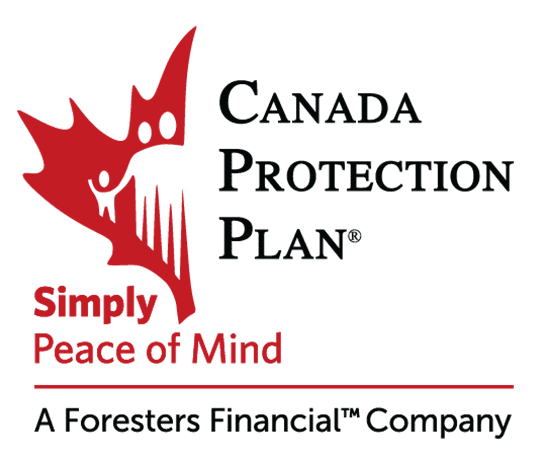
Business photo created by tirachardz – www.freepik.com
By Scott Spann | The Balance
How Improving your Financial Wellness Today Will Lead to Retirement Success.
The retirement planning process takes time and effort. At times it may seem like an overwhelming task. But what you do today can help you achieve your retirement goals and allow you to maintain the lifestyle you want in your later years. Here are some tips to make reaching those retirement goals feel a little more manageable.
Tip 1: Focus on the things you can do and decide to take action today
Retirement confidence levels are really low right now with research reports showing that less than 20% of employees in the workforce report they are on track to meet their retirement goals. What’s more concerning in the report from Financial Finesse is that 61% of employees don’t know if they are saving enough to retire comfortably. These employees fall into the “unknown” category due to their lack of planning. As the common phrase says, “Those who fail to plan, plan to fail.” If you are feeling a general lack of retirement confidence or fall into the category of “unknowns” because you have not yet created a basic plan, you can take control of your retirement planning by following these steps to increase your sense of preparedness:
Create a plan and put it in writing
Determine what you will need to retire. Even if retirement is a long-term goal a ballpark estimate will do. You can estimate what you will have available by looking at your current investments and retirement income sources. Then, calculate what you need to save annually to meet your retirement goal. Your written financial plan does not have to be overly complicated and can be as simple as a one-page plan.
Implement your plan
This is by far the most important initial step because procrastination will only serve as a roadblock on your path to financial independence. If you discover that you will not be able to reach your retirement goal with the current money you are saving, take additional action today by identifying ways to save more, reduce your expense needs, eliminate debt, or alter your original plans. It is never too late to get back on the right track.
Track your progress
Running a retirement calculation at least once per year is advisable to see if you are on track to meet your goals. Keep in mind that your plan is dynamic, not static. Review your progress at least once a year. Also think about the impact that life events such as a marriage or divorce, promotion or layoff, birth of a child and funding an education will have on your plan. If necessary, make changes to your plan as your situation changes and keep the lines of communication with your spouse, partner, friends, family, financial planner, or anyone who will listen to your retirement plans!
Tip 2: Protect yourself and your loved ones
It is not uncommon to place all of our focus and attention on saving for retirement rather than concentrate on protecting against potential risks. Avoid that mistake by thinking about the financial risks you can withstand, and the ones can you reduce the impact of or eliminate altogether.
Your life
Make sure you have adequate life insurance coverage and the right type of insurance for your needs. It’s best to review your coverage needs using an unbiased approach before thinking about the type of policies to fill any coverage gaps. You can generally choose from term, whole life, universal life, and variable life insurance. Review your policies at least once a year. It is also important to recognize as your situation changes or a major life event happens, your coverage may need to change too. As your planned retirement date nears be sure to re-assess your life insurance needs.
Your health
A long-term disability event or a long-term stay in a nursing home can have a dramatic and long-lasting impact on your wealth. Appropriate coverage can reduce the financial risk associated with these obstacles and should be a part of your retirement planning review. If you are concerned about your health insurance options as you get closer to retirement, be sure to include health care costs into your budget plan for retirement.
Your assets
From an investment perspective, a diversified portfolio helps reduce the risk of your entire retirement nest egg going south and taking your retirement dreams with them. Choosing the right investment allocation based on your financial goals, age, risk tolerance, and time horizon can make a major difference. But you also want to think about other assets such as your home or other real estate properties. Perhaps the most important asset is your ability to earn income both now and in the future. You may be able to use your passion and skills to generate extra income through self-employment or a retirement side-hustle.
Tip 3: Take a look at all of your retirement saving options
Employer-sponsored retirement plans
Many financial experts suggest that your company retirement plan can be one of your best investments. Why?
- Contributions are made pre-tax so they directly reduce your taxable income. And they also grow tax-deferred, so you won’t pay taxes on the gains until you withdraw the funds.
- It is rarely wise to leave behind free money through matching contributions! The majority of companies offer matching programs that can enhance the return on your money. To benefit from an employer match, make sure you are contributing at least up to the company match if not more. The average employer contribution amount is around 3 percent. Check with you HR department for more details.
Tip 4: Focus on your overall financial well-being
Financial wellness is a term used to describe the status of our overall financial health and it is directly linked to retirement preparedness. Reassess the way you currently manage your finances and take a holistic approach to improving your overall financial health. Here are some easy ways to improve your sense of financial wellness and find more cash to put towards your retirement.
Increase your knowledge
The more time you take to learn about retirement savings options the better prepared you will be.
Increase your income
If you are worried about not having enough income to put towards savings, consider increasing your income by working overtime, getting a part-time job, starting a business, or purchasing a rental property. Use the extra income to reduce debt so you have more to put towards savings or to invest for the future.
Find ways to reduce your spending
A budget or “personal spending plan” is a key step to retirement success. Living below your means allows you to increase the money you have to save today so that you can invest it in a retirement vehicle for the future. Go beyond simply tracking where your money has gone in the past and tell your money where to go before the month begins. Figure out what you spend a month in committed expenses, like housing, utilities and food, versus your discretionary lifestyle expenses, like entertainment and dining out. Are these things that are more “want” or “need”? See where you can trim back and take that money and put it towards savings or investing.
Refinance and consolidate debts
If you have high-interest debt spend some time researching lenders willing to refinance your current debt at a lower rate than you are currently paying. In general, collateralized debt, such as a car loan, will have a lower rate than unsecured debt. Real estate-based debt is generally tax deductible and can be financed over longer time periods than most other forms of debt, which can make it one of the cheapest sources of debt.
Eliminate extra fees and charges
Are your current banking and credit-related relationships charging excessive fees? Shop around for better deals, compare rates and evaluate services between banks, credit unions, credit cards, and lending institutions. Use the extra savings from fees and charges to pay down debt or invest.
Search for ways to reduce your taxes
Improving your financial well-being doesn’t happen overnight. But if you take just a few of these steps on a regular basis you will be on the path to retirement success.
By Scott Spann | The Balance | Updated June 25, 2019
NB: This article may have been edited and /or condensed. The information contained is as of date of publication and may be subject to change. These articles are intended as general information only. A licensed advisor should be consulted regarding your specific situation.







